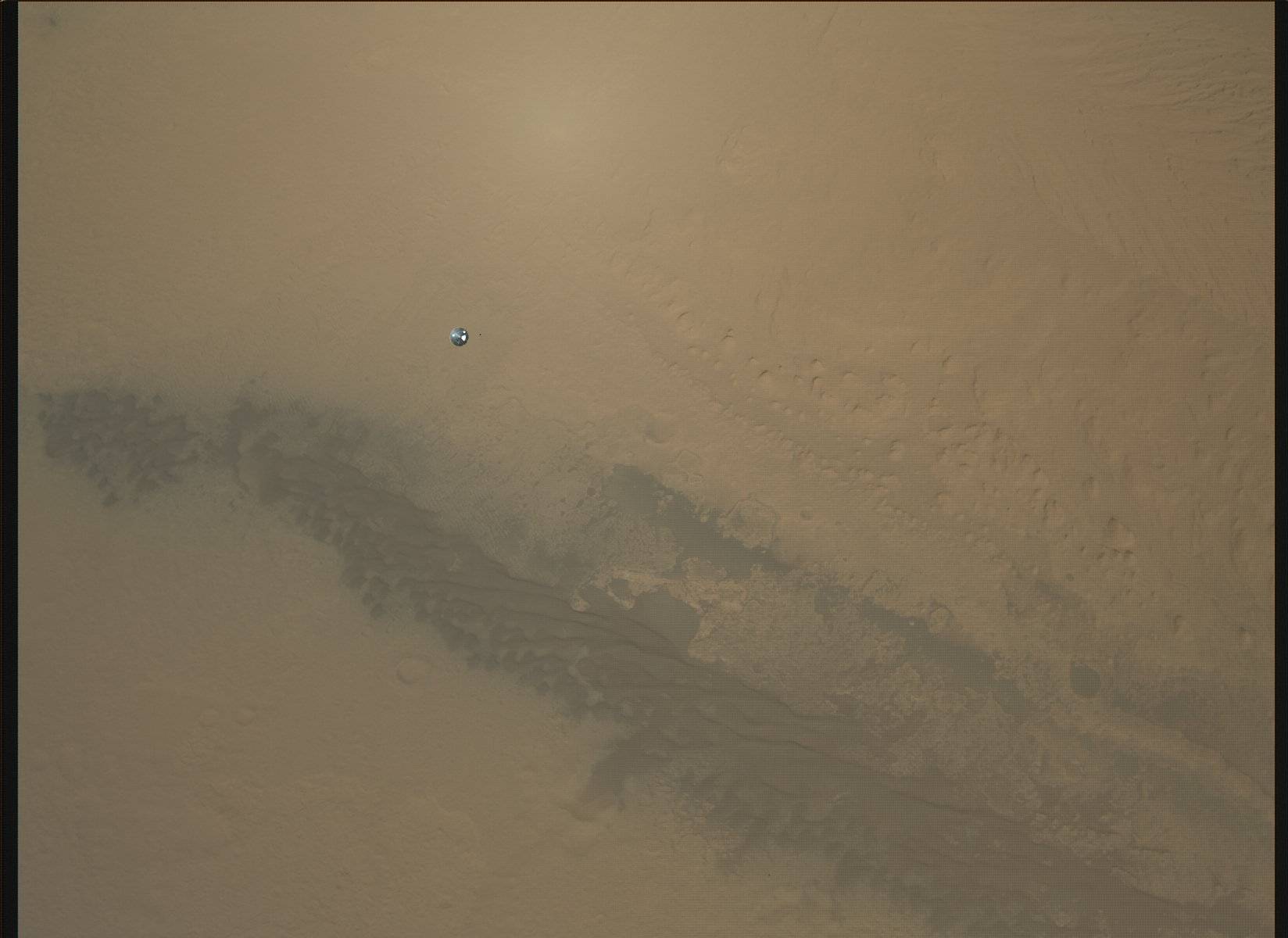W&T Wetenschap & Technologie
Een plek om te discussiëren over wetenschappelijke onderwerpen, wetenschappelijke problemen, technologische projecten en grootse uitvindingen.



Doet me hier aan denken:quote:Op dinsdag 7 augustus 2012 20:41 schreef Pek het volgende:
[..]
Hij dacht nog wel dat hij weer naar huis mocht
[ afbeelding ]
Egregious professor of Cruel and Unusual Geography
Onikaan ni ov dovah
Onikaan ni ov dovah


Arme robots 
Gelukkig zijn ze niet zelfbewust.
Gelukkig zijn ze niet zelfbewust.
❤ Rozen zijn rood ❤
❤ Viooltjes zijn blauw ❤
❤ Kristel, ik hou van jou! ❤
❤ Viooltjes zijn blauw ❤
❤ Kristel, ik hou van jou! ❤


Dat dachten ze ooit van vrouwen en negers ook. En wat als het nu wel zo is?quote:Op dinsdag 7 augustus 2012 21:00 schreef __Saviour__ het volgende:
Arme robots
Gelukkig zijn ze niet zelfbewust.
The End Times are wild


Ze komen vanzelf wel in opstand.quote:Op dinsdag 7 augustus 2012 21:05 schreef LXIV het volgende:
[..]
Dat dachten ze ooit van vrouwen en negers ook. En wat als het nu wel zo is?
And if you listen very hard
The tune will come to you at last
When all are one and one is all
To be a rock and not to roll
The tune will come to you at last
When all are one and one is all
To be a rock and not to roll


Wordt ooit nog wel een puntje voor de wetenschap. Al we een echte zelfbewuste AI scheppen, mogen we ze dan wel de eenzame ruimte insturen?
❤ Rozen zijn rood ❤
❤ Viooltjes zijn blauw ❤
❤ Kristel, ik hou van jou! ❤
❤ Viooltjes zijn blauw ❤
❤ Kristel, ik hou van jou! ❤


Ik denk dat Curiosity weinig kans maakt met z'n eenmansactie op Mars. Alles wat hij kan doen is staken. Zijn voorgangers deden dat ook geregeld.quote:
The End Times are wild


Dat is een Amerikaanse punt, dus net meer dan 1 MB.quote:Op dinsdag 7 augustus 2012 17:47 schreef -CRASH- het volgende:
[..]
Kleintje
Mag het er ook een zijn van 1.131 MB
Op dinsdag 23 augustus 2011 23:18 schreef problematiQue het volgende:
Mensen die zomaar claimen dat A beter is dan B moet je gewoon negeren. Internetruis.
Mensen die zomaar claimen dat A beter is dan B moet je gewoon negeren. Internetruis.


Alleen als ze geprogrammeerd worden om in opstand te komen.quote:
Rui Pereira: "You're an artist, you don't give a fuck!"


Spirit houdt het lang vol inderdaad, de rebel! 
SPOILEROm spoilers te kunnen lezen moet je zijn ingelogd. Je moet je daarvoor eerst gratis Registreren. Ook kun je spoilers niet lezen als je een ban hebt.


Bij deze kan ik iedereen - als ze werkelijk niks anders te doen hebben - de film Red Planet met Val Kilmer aanraden:quote:Op dinsdag 7 augustus 2012 22:43 schreef house_is_a_feeling het volgende:
[..]
Alleen als ze geprogrammeerd worden om in opstand te komen.
Op "Google Earth" (wel "Google Mars" in feite) kan je de Gale Crater bekijken maar voorlopig hebben ze daar nog niet zoals bij de Opportunity extra info voorzien.
Verder blijf ik http://mars.jpl.nasa.gov/explore/curiosity/#141/818 in de gaten houden, maar Sol 0 en Sol 1 zijn denk ik nog niet representatief voor wat die site gaat doen.
[ Bericht 16% gewijzigd door zuiderbuur op 07-08-2012 23:41:06 ]


MSL Landing Recap and Sol 1 Outlook (door NASAtelevision)
NASA's Curiosity Sol 2 Update (door NASAtelevision)
[ Bericht 0% gewijzigd door ExperimentalFrentalMental op 08-08-2012 10:06:48 ]
NASA's Curiosity Sol 2 Update (door NASAtelevision)
[ Bericht 0% gewijzigd door ExperimentalFrentalMental op 08-08-2012 10:06:48 ]
Death Makes Angels of us all
And gives us wings where we had shoulders
Smooth as raven' s claws...
And gives us wings where we had shoulders
Smooth as raven' s claws...


Eén van de frames van het afdalingsfilmpje is nu in hoge resolutie beschikbaar:
Op dinsdag 23 augustus 2011 23:18 schreef problematiQue het volgende:
Mensen die zomaar claimen dat A beter is dan B moet je gewoon negeren. Internetruis.
Mensen die zomaar claimen dat A beter is dan B moet je gewoon negeren. Internetruis.


Deze is meer van Toepassingquote:
In Baden-Badener Badeseen kann man Baden-Badener baden sehen.


Zo onwijs mooi, dat Mars-oppervlak.quote:Op woensdag 8 augustus 2012 09:46 schreef Gebraden_Wombat het volgende:
Eén van de frames van het afdalingsfilmpje is nu in hoge resolutie beschikbaar:
[ afbeelding ]
And what rough beast, its hour come round at last,
Slouches towards Bethlehem to be born?
Slouches towards Bethlehem to be born?


En er is ongeveer even veel Mars-oppervlak als landoppervlak op Aarde. Nog heel wat te onderzoeken dus.quote:Op woensdag 8 augustus 2012 09:55 schreef Perrin het volgende:
[..]
Zo onwijs mooi, dat Mars-oppervlak.
Op dinsdag 23 augustus 2011 23:18 schreef problematiQue het volgende:
Mensen die zomaar claimen dat A beter is dan B moet je gewoon negeren. Internetruis.
Mensen die zomaar claimen dat A beter is dan B moet je gewoon negeren. Internetruis.


Maar zo te zien nog steeds compressed. Volgens mij zijn de echte beelden nog groter. 1600px breed dacht ikquote:Op woensdag 8 augustus 2012 09:46 schreef Gebraden_Wombat het volgende:
Eén van de frames van het afdalingsfilmpje is nu in hoge resolutie beschikbaar:
[ afbeelding ]
Opgeblazen gevoel of winderigheid? Zo opgelost met Rennie!


Eindelijk begrijp ik waar die M voor staat...
In Baden-Badener Badeseen kann man Baden-Badener baden sehen.


Die foto is 1648x1200, en de resolutie van de camera is volgens deze beschrijving 1600x1200. Ik weet niet of we nog beelden krijgen met minder compressie. In elk geval is dit een raw image, hij wordt nog opgeschoond voordat ze hem in de publiciteit gooien.quote:Op woensdag 8 augustus 2012 10:01 schreef Eyjafjallajoekull het volgende:
[..]
Maar zo te zien nog steeds compressed. Volgens mij zijn de echte beelden nog groter. 1600px breed dacht ik
Op dinsdag 23 augustus 2011 23:18 schreef problematiQue het volgende:
Mensen die zomaar claimen dat A beter is dan B moet je gewoon negeren. Internetruis.
Mensen die zomaar claimen dat A beter is dan B moet je gewoon negeren. Internetruis.


Nu al het meest meesterlijke filmpje ooit.quote:Op woensdag 8 augustus 2012 09:46 schreef Gebraden_Wombat het volgende:
Eén van de frames van het afdalingsfilmpje is nu in hoge resolutie beschikbaar:
[ afbeelding ]
Ik ga naar huis.


Hmm, je hebt gelijk. Vreemd want als je inzoomed zie je duidelijk die compressie artefacts.
Opgeblazen gevoel of winderigheid? Zo opgelost met Rennie!


Het hele filmpje is al beschikbaar in low-resquote:Op woensdag 8 augustus 2012 10:08 schreef nietzman het volgende:
[..]
Nu al het meest meesterlijke filmpje ooit.
Opgeblazen gevoel of winderigheid? Zo opgelost met Rennie!


Die Sol2 update is weer erg mooi!!! En ik kan niet wachten op de resultaten van de acties die vandaag gepland staan.quote:Op woensdag 8 augustus 2012 01:35 schreef ExperimentalFrentalMental het volgende:
MSL Landing Recap and Sol 1 Outlook (door NASAtelevision)
NASA's Curiosity Sol 2 Update (door NASAtelevision)
Hoe laat is nu de volgende pers conferentie??
Alpha kenny one


Dagelijks om 19:00 uur, onze tijd.
The difference between the three Abrahamic religions:
- Christianity mumbling to the ceiling,
- Judaism mumbling to the wall,
- Islam mumbling to the floor.
- Christianity mumbling to the ceiling,
- Judaism mumbling to the wall,
- Islam mumbling to the floor.


In de begindagen van zo'n missie ben ik altijd wat nerveus dat er iets misgaat, iets functioneert niet goed, een wieltje komt vast te zitten, een BSOD, weet ik veel. Dat zou ontzettend zonde zijn natuurlijk, nog voordat we de meeste instrumenten hebben kunnen gebruiken.
Als het maar tenminste 3 maanden goed werkt, dan heb je een groot deel van de nieuwe data al binnen. Natuurlijk kun je dan hopelijk nog lang doorgaan, maar in feite is er al succes.
Dus hopelijk gaat alles goed de komende tijd. Wacht vol spanning op de eerste hi-res beelden!
Als het maar tenminste 3 maanden goed werkt, dan heb je een groot deel van de nieuwe data al binnen. Natuurlijk kun je dan hopelijk nog lang doorgaan, maar in feite is er al succes.
Dus hopelijk gaat alles goed de komende tijd. Wacht vol spanning op de eerste hi-res beelden!
The End Times are wild


Even afgezien dat het gewoon apentietengeile technologie is, de Sky Crane, een rover formaat van een compacte auto op mars neerzetten met een nucleaire batterij die het voor tijden van stroom voorziet, wat voor een meerwaarde brengt deze missie? Wat voor een testen en probes kan hij doen die voorgaande niet konden? Ik begreep dat er veel geologische experimenten mogelijk gaan worden, maar is er een overzicht wat hij gaat doen?
In Baden-Badener Badeseen kann man Baden-Badener baden sehen.


Hopelijk werken alle instrumenten ook naar behoren en krijgen we nog vaak wat moois te zien of te horen van Mars


wiki:quote:Op woensdag 8 augustus 2012 11:21 schreef Pietverdriet het volgende:
Even afgezien dat het gewoon apentietengeile technologie is, de Sky Crane, een rover formaat van een compacte auto op mars neerzetten met een nucleaire batterij die het voor tijden van stroom voorziet, wat voor een meerwaarde brengt deze missie? Wat voor een testen en probes kan hij doen die voorgaande niet konden? Ik begreep dat er veel geologische experimenten mogelijk gaan worden, maar is er een overzicht wat hij gaat doen?
The MSL mission has four scientific goals: Determine whether Mars could ever have supported life — including the role of water, study the climate and geology of Mars. It is also useful preparation for future missions, perhaps a manned mission to Mars.
To contribute to these goals, MSL has six main scientific objectives:[13][33]
Determine the mineralogical composition of the Martian surface and near-surface geological materials.
Attempt to detect chemical building blocks of life (biosignatures).
Interpret the processes that have formed and modified rocks and soils.
Assess long-timescale (i.e., 4-billion-year) Martian atmospheric evolution processes.
Determine present state, distribution, and cycling of water and carbon dioxide.
Characterize the broad spectrum of surface radiation, including galactic radiation, cosmic radiation, solar proton events and secondary neutrons.
As part of its exploration, it also measured the radiation exposure in the interior of the spacecraft as it traveled to Mars, and it is continuing radiation measurements as it explores the surface of Mars. This data would be important for a future manned mission.[34]
met onder andere de volgende instrumenten:
ChemCam: ChemCam is a suite of remote sensing instruments, including the first laser-induced breakdown spectroscopy (LIBS) system to be used for planetary science and a remote micro-imager (RMI).
See also: Curiosity rover#Chemistry and Camera complex (ChemCam)
Alpha-particle X-ray spectrometer (APXS): This device can irradiate samples with alpha particles and map the spectra of X-rays that are re-emitted for determining the elemental composition of samples.
See also: APXS)
CheMin: CheMin is the Chemistry and Mineralogy (CheMin) X-ray diffraction and X-ray fluorescence instrument.
See also: CheMin)
Sample Analysis at Mars (SAM): The SAM instrument suite will analyze organics and gases from both atmospheric and solid samples.
Main article: Sample Analysis at Mars
See also: SAM
MSL's cruise stage on Earth
Radiation assessment detector (RAD): This instrument was the first of ten MSL instruments to be turned on. Both en route and on the planet's surface, it will characterize the broad spectrum of radiation encountered in the Martian environment. Turned on after launch, it recorded several radiation spikes caused by the Sun.[61]
See also: RAD
Dynamic Albedo of Neutrons (DAN): A pulsed neutron source and detector for measuring hydrogen or ice and water at or near the Martian surface.
See also: DAN
Rover environmental monitoring station (REMS): Meteorological package and an ultraviolet sensor provided by the Spanish Ministry of Education and Science.
See also: Rover Environmental Monitoring Station (REMS)
| Forum Opties | |
|---|---|
| Forumhop: | |
| Hop naar: | |








